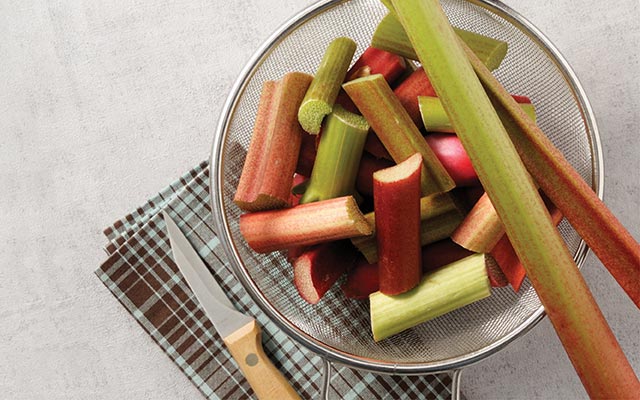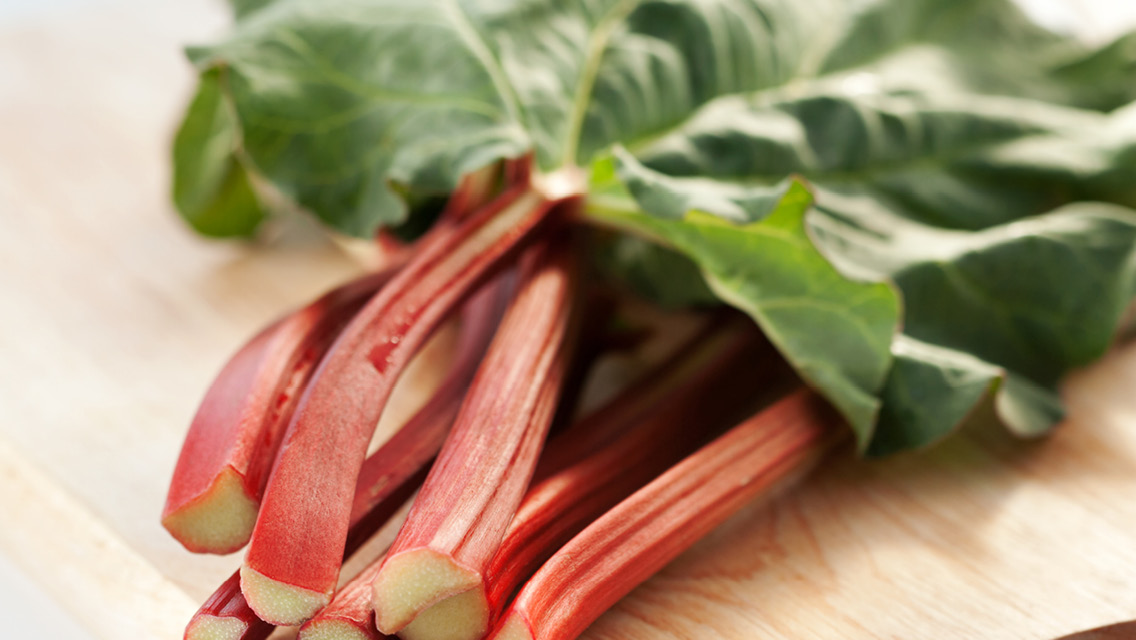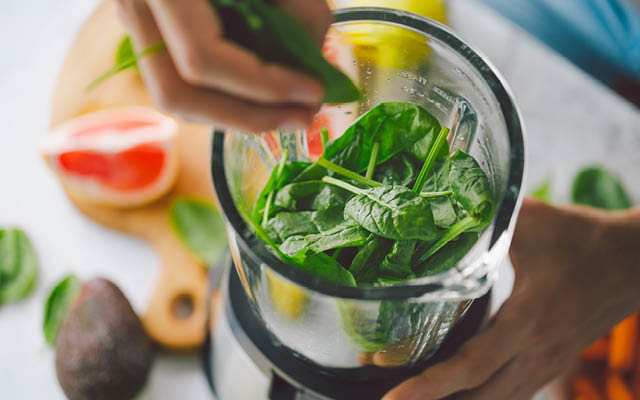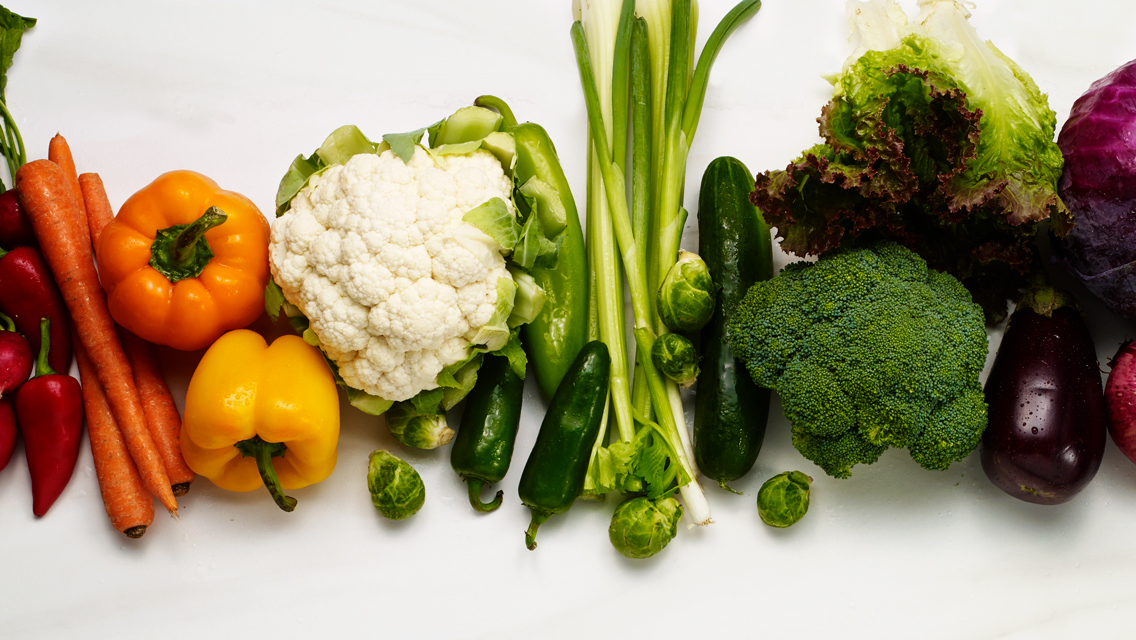Shop and Store
Look for bright, firm stalks without blemishes. Store rhubarb unwashed in a zip-top bag in the refrigerator for up to a week. To freeze for longer-term storage, wash and dice the stalks, then spread them on a baking sheet and place in the freezer. Once frozen, transfer the pieces to a freezer container.
Take Your Pick
Two varieties of rhubarb are typically available at your local grocer: field-grown rhubarb with thin red stalks and hothouse rhubarb with less-acidic pink or light-red stalks. Both types deliver vitamin C, vitamin K, and health-promoting minerals like potassium and manganese.
Prep and Cook
Roasting, stewing, or sautéing the stalks will mellow their tart flavor. Be sure to use a nonreactive pan, such as enameled cast iron, stainless steel, or glass, since rhubarb’s acidity can discolor aluminum, iron, or copper. And discard the inedible toxic leaves; they contain high concentrations of oxalic acid and can make you sick.
Change It Up
Often paired with strawberries to complement the fruit’s sweetness, rhubarb can also add a satisfying acidic note to savory dishes. Add a cup of diced rhubarb into your next stew or curry, or include pickled stalks in salads or sandwiches.
To pickle, trim the stalks and place them upright in a clean, dry canning jar. Combine 1 cup water, ½ cup white vinegar, 1 tablespoon salt, and 1 tablespoon sugar in a medium saucepan, and boil until the salt and sugar dissolve. Pour the brine over the vegetables to cover, then let cool. Secure the lid and refrigerate for up to a month.
This originally appeared as “Rhubarb” in the June 2020 print issue of Experience Life.




This Post Has 0 Comments